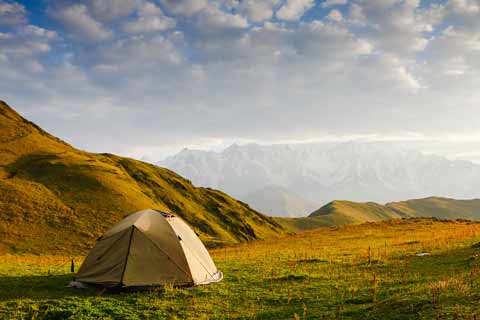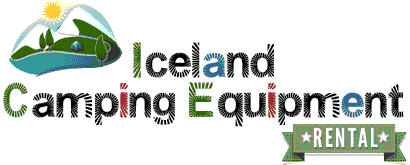Do’s and don’ts of camping in Iceland

The bag is packed, tent booked at Iceland Camping Equipment ;) - you are all set for your amazing Icelandic camping holiday! Or are you? When holidaying in a faraway country, there are many unexpected details to take into account and unwritten rules to follow. To help you prepare for an amazing and snag-free trip, we have prepared a list of our top 6 do’s and do nots when it comes to camping in Iceland.
Do bring the right equipment
Camping in Iceland is easy, if you are prepared. Make sure you have packed a tent designed to withstand the windy and rainy weather, as well as a warm sleeping bag. You won’t regret adding a sleeping pad to the mix: the cold from the ground creeps in during the night, and a pad can make your nights much more pleasant and warm by creating a much needed isolating layer.
Don’t underestimate the weather
Icelandic weather can be wild and unpredictable. The good news is that the weather forecast is usually pretty reliable, so make sure you keep a close eye on the Icelandic Met Office warnings. Thankfully stormy nights are few and far between in the summer, but it’s still a good idea to check out the Met Office forecast: if you know which way the rainy clouds are turning, you can travel the other way.
As we always say in Iceland, the best way to choose a traveling direction here is to follow the sun, and avoid the clouds.
Need some equipment? Reserve now !
Do visit the campsites
Icelanders love camping, so it’s perhaps unsurprising that the whole island is covered with campsites of all kinds (more than 200!). We advise all our guests to sleep at campsites. Although wild camping is allowed in Iceland under some circumstances, it is generally discouraged, also (but not only) because of the high risk of stopping on private land. There really is no need to look for ditches to camp in, though: campsites in Iceland are many, inexpensive and there is no need to book a space. Plus, there often are facilities. Although few campsites feature a convenience store, many offer services, such as a grill which can be used by guests, restrooms and showers. And that’s what really tips the scale for us: nothing beats a long, warm shower after a day’s hike.
Don’t leave traces
Much of Iceland is still uncontaminated, so you may not find bins everywhere you go. Many areas, including the highlands, are not patrolled, and garbage can sit (or rather, fly) around for a long time without being picked up. If you are going to camp or hike in wild areas it’s a good idea to carry a bag to collect waste, which you can then throw at the campsite, or once back into civilization.
Do respect the nature
The Icelandic nature is very fragile. Practices which may seem harmless such as throwing coins in springs, walking on moss, or driving off-road (which is strongly banned, and subject to hefty fines), are actually among the top causes of damage to the Icelandic environment. The local vegetation can take years to grow back (this is, for instance, the case with moss), so think twice and thrice before removing or damaging plants and rocks: in the wilderness, every action people take can have very bad and long-lasting effects on the nature.
Don’t be afraid to explore
Iceland is a very safe country. With over 200 equipped campsites on the island, there are plenty of routes you can take. Our advice is, don’t feel obliged to stick to the capital area and the few known spots. Regions like the Westfjords and East coast may be less known, yet there are plenty of hiking paths and breathtaking sceneries, and fewer fellow travellers to share them with.







